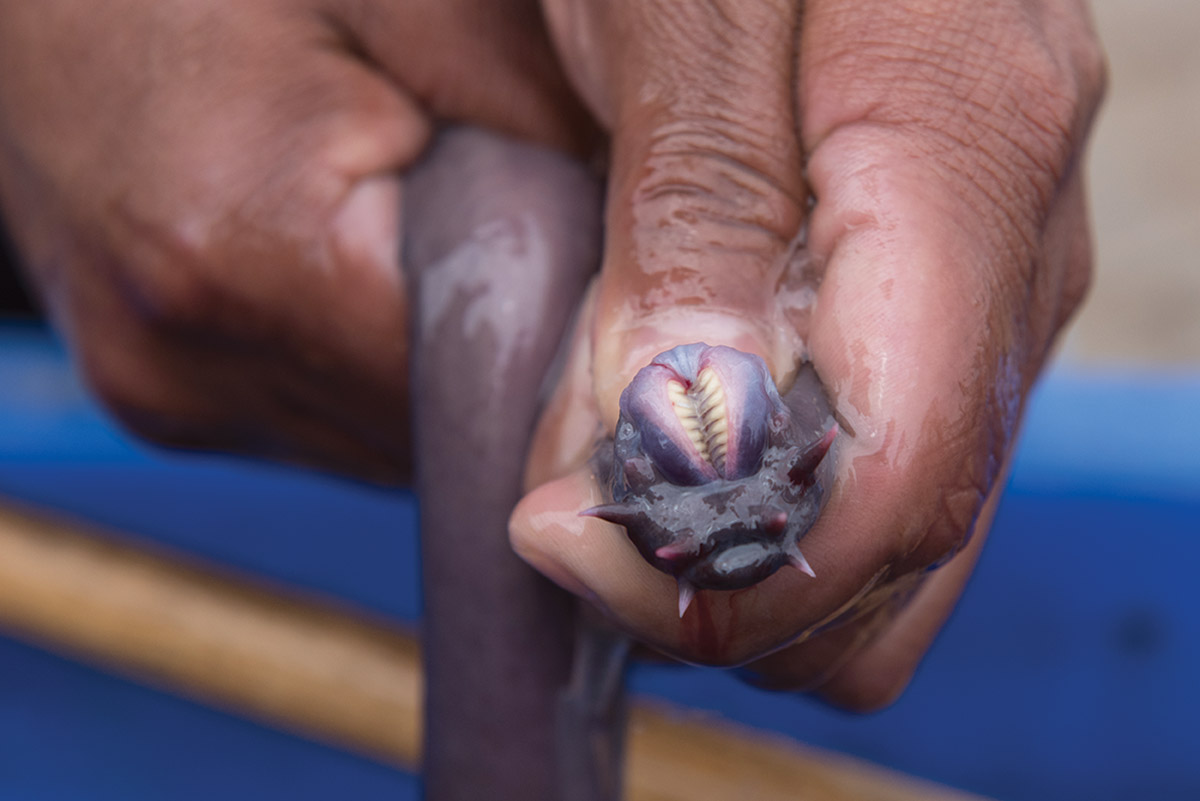Why You Don’t Want to Eat Hagfish
Hundreds of meters deep in the dark of the ocean, a shark glides toward what seems like a meal. It’s kind of ugly, eel-like, and not particularly meaty, but to a shark, everything is probably food. So the shark strikes — and finds its dinner interrupted by a cloud of protective slime that appeared out of nowhere around an otherwise placid hagfish.
UW math professor Jean-Luc Thiffeault and other researchers have modeled the hagfish’s gag-inducing defense mechanism mathematically, publishing their work in the Journal of the Royal Society Interface.
The ocean-dwelling hagfish is unique for all the strangest reasons. It has a skull but no spine or jaw. Its skin hangs loose on its body, attached only along the back. Its teeth and fins are primitive. But it can produce many times its own body’s volume in slime. The goop is so thick and fibrous, predators have little choice but to spit out the hagfish and try to clear their mouths.
“The mouth of the shark is immediately chock-full of this gel,” Thiffeault says. “In fact, it often kills them, because it clogs their gills.”
The slime modelers set out to see if math could tell them whether the forces of the turbulent water of a bite-and-shake attack were enough to unspool the skeins of slime, or if another mechanism — like a chemical reaction — was required. What they found indicates that strands of slime get stuck to various surfaces (a predator’s mouth, its fins, its flippers, or other slime strands) and then become a giant mess.
“Think of it as a roll of tape,” says Thiffeault. “To start pulling tape from a new roll, you may have to hunt for the end and pick it loose with your fingernail. But if there’s already a free end, it’s easy to catch it with something and get going.”
Published in the Summer 2019 issue




Comments
No comments posted yet.